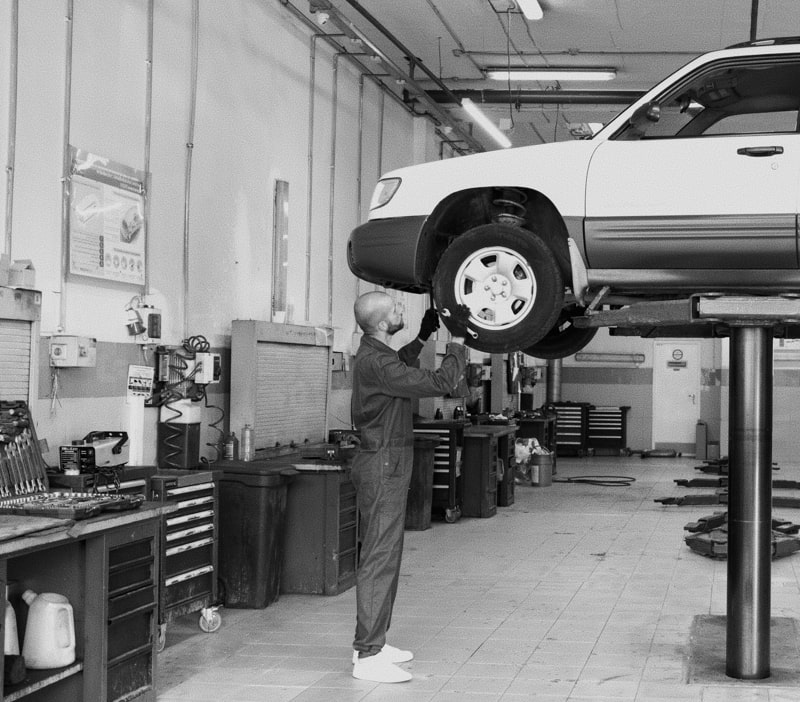How To Prevent Downtime With Regular Hydraulic Lifting Equipment Checks
 Hydraulic lifting equipment is essential to so many operations around the world. Ensuring their reliability in the workforce can significantly impact productivity. Downtime due to equipment failure disrupts your workflow, costing businesses both time and money, so ensuring hydraulic systems are in good working order is paramount for the success of many.
Hydraulic lifting equipment is essential to so many operations around the world. Ensuring their reliability in the workforce can significantly impact productivity. Downtime due to equipment failure disrupts your workflow, costing businesses both time and money, so ensuring hydraulic systems are in good working order is paramount for the success of many.
Preventive maintenance on hydraulic lifting equipment is an effective measure that helps to avoid unexpected breakdowns and by establishing consistent check routines, you can detect potential problems early and maintain operational efficiency.
The maintenance techniques covered here apply to a broad range of industrial and construction machinery.
Below are some common types of equipment that rely on hydraulic systems:
-
- Forklifts for material handling
- Scissor lifts for elevated work platforms
- Telehandlers for versatile lifting and carrying
- Aerial work platforms (boom lifts) for high-reach tasks
- Hydraulic presses used in manufacturing operations
- Pallet jacks for basic warehouse lifting
Essential Areas to Inspect on Hydraulic Lifting Equipment
Routine inspection of critical components ensures that hydraulic lifting equipment remains safe and functional.
Inspect Hydraulic Cylinders and Hoses
Hydraulic cylinders require regular inspection for signs of leakage, corrosion, and physical damage.
Leaking cylinders reduce lifting power and increase the likelihood of operational failures.
Hoses and fittings should be examined for leaks, cracks, or wear to prevent fluid loss and pressure drops.
Identifying these issues promptly allows repairs before equipment failure occurs.
Check Hydraulic Fluid Levels and Quality
Hydraulic fluid levels and their quality directly impacts equipment performance.
Contaminated fluid or low hydraulic fluid levels lead to overheating, corrosion, and premature wear.
Inspect the fluid regularly for cleanliness, viscosity, and proper levels and replace it if any issues are found.
Maintaining optimal fluid conditions ensures your equipment operates smoothly and reduces the likelihood of unexpected downtime.
Regular attention to these particular inspection points will significantly reduce equipment malfunction risks and decrease costly interruptions.
Below are several other components to check:
Valves and Seals
Check for leaks, wear, or blockages and confirm that all seals are intact and free of cracks or warping.
Hydraulic Pumps and Motors
Listen for unusual noises indicating mechanical issues and monitor operating temperatures to catch early signs of overheating.
Filters and Reservoir
Inspect filters for dirt or clogs and replace them according to the manufacturer’s recommendations. Look inside the reservoir for signs of sediment, excessive foam, or discoloration of the fluid.
Structural Components
Examine the frame, joints, welds, and pivot points for cracks or signs of stress. Ensure all pins and bushings are fitted in place and properly lubricated.
Control Panels and Safety Devices
Test control switches, emergency stop buttons, sensors, and limit switches. Verify that safety features (guardrails, interlocks, etc.) function correctly and remain in good repair.
Develop a Regular Inspection Schedule
A structured maintenance schedule keeps hydraulic equipment running reliably, extends its lifespan, minimize disruptions, and preserves productivity and safety on your job site.
Perform Daily Operational Checks
Checks all hydraulic equipment on a daily basis.
Daily checks will help identify minor issues before they escalate.
You should inspect hoses, connections, controls, and all lifting mechanisms by looking for leaks, unusual noises, loose fittings, cracks, or corrosion.
By regularly addressing these smaller points of concern on a daily basis, you’ll greatly reduces the likelihood of minor/severe malfunctions.
Set Scheduled Comprehensive Inspections
Along with daily inspection are in-depth inspections that should be performed monthly to uncover deeper – less apparent problems.
Schedule comprehensive assessments of cylinders, seals, valves, and overall structural integrity.
It’s also wise to document these inspection thoroughly for record-keeping purposes. A detailed inspection log helps track trends and plan for preventive maintenance tasks and ordering new parts.
In facilities that utilizes heavy lifting equipment, it’s important to maintain quick and easy access to quality overhead crane parts to ensure quick repairs and minimize operation downtime. Having the right parts on-hand helps you address problems before they escalate and keeps your operations running smoothly.
By regularly checking these areas of your equipment, it keep it reliable, safe and significantly reduces downtime.
Implement a Preventive Maintenance Schedule
 Develop a structured preventive maintenance schedule to maintain long-term efficiency and prevent unexpected breakdowns and costly repairs.
Develop a structured preventive maintenance schedule to maintain long-term efficiency and prevent unexpected breakdowns and costly repairs.
Set Inspection Intervals
Set a preventive maintenance schedule to clearly outline inspection intervals based on equipment usage and the manufacturer’s recommendations.
Create monthly, quarterly, and annual inspection routines that are tailored to specific equipment usage and operational demands.
Systematic scheduling ensures equipment is consistently assessed and reduces unexpected downtime and safety issues.
Create Employee Training Courses
Creating employee training courses help ensure your staff understands the importance of preventive maintenance procedures.
By providing training on correct inspection techniques, troubleshooting, and equipment servicing, employees will be encouraged to take accountability and it will improve compliance and workplace safety.
Thorough training also protects the organization from potential legal liabilities by meeting industry standards and OSHA regulations.
Compliance with these requirements helps companies avoid penalties, lawsuits, and reputational damage.
Maintain Accurate Records and Documentation
Set up accurate record-keeping to support effective equipment management. Record keeping and accurate documentation logs essential data that assists in identifying recurring issues, tracking maintenance tasks, ensuring regulatory compliance and so forth.
Use Detailed Inspection Logs
Maintain detailed records of each inspection including dates, observations, performed repairs, and parts replacements.
Accurate record keeping allows for quick identification of recurring issues and you can use these insights to adjust maintenance schedules, predict component lifespans, and optimize equipment longevity.
Leverage Technology for Tracking
By using a digital maintenance management system, you can simplify equipment tracking and monitoring.
These systems can be set up to send automated reminders, schedule inspections, and securely store maintenance histories.
Digital records ensure accuracy, easy access, and convenient streamlined reporting.
This is an example of technology that improves oversight and helps your operation become more proactive rather than reactive, and significantly enhances the ability to prevent costly downtime.